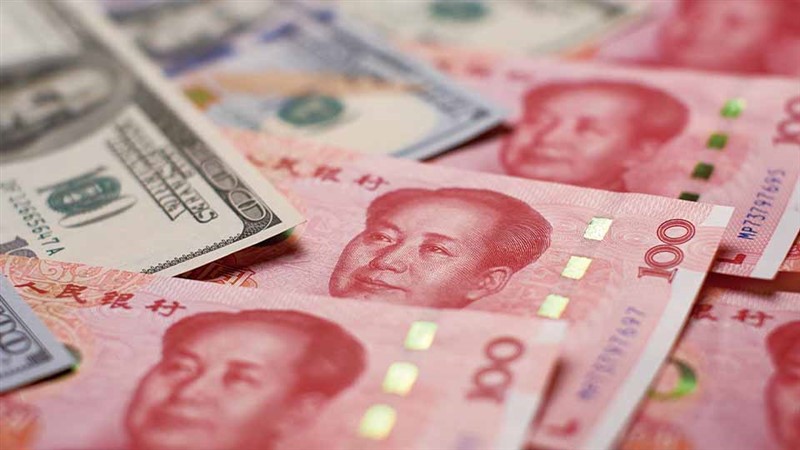Banker's Digest
2023.11
A bird's-eye view on China's capital flows and its implications

China has turbocharged its RMB internationalization progress in 2023, including the greater usage of its currency in cross-border payments and trade settlement deals, including Argentina and Brazil. Such “de-dollarization” has yet to translate into a strong RMB. Investors are worried about China’s growth prospects, and border opening has refueled possibilities for unrecorded outflows, which were absent during the pandemic. With China's larger tolerance of RMB’s movements and the higher yuan’s usage globally, it is crucial to have a framework to analyze its capital flows. In this note, we link the RMB movements with China’s net capital flows, including trade in goods and services, foreign direct investment (FDI) and portfolio investment. Regarding the market movement, we analyze spot exchange rates, forward markets, offshore deposits and net RMB FX conversion in Hong Kong. It goes without saying that RMB movements cannot only be explained by the flow of funds, as the government’s hand remains very visible. Net capital flows show fundamental depreciation pressure in the short run The main change in China's capital flows since 2022 is that the currency is now only supported by the current account, while the net capital inflows in the financial account have reverted into outflows since Q2 2022. Within the current account, the trade surplus in goods is the key factor behind China’s capital inflows. As exports have outpaced imports of goods in recent years, FX conversion by exporters is a crucial support for the RMB. Although exports fell 5.4% YoY YTD in August 2023, China’s trade surplus may not shrink too much as commodity prices have declined even more sharply. However, the capital flows through trade in services, FDI and portfolio investment are more challenging. For the former, outbound travel have been the biggest component of capital outflows in services. Still, we do not expect outbound tourism to accelerate much faster due to high inflation globally and a weak yuan. Due to the bleak economic outlook, higher production costs, tightened regulations, and elevated geopolitical risk, there is a clear deceleration in China’s inward FDIs from its peak in 2021. China’s net FDI has reverted into outflows for the first time since 2015-16, even though the gap is smaller than before. Regarding portfolio investment, there are capital outflows in bonds by residents and non-residents. For domestic investors, the accumulated outbound investment grew from $296 billion in 2020 to $443 billion in 2022, driven by monetary policy divergence between China and the world, including the US and Eurozone. The share of foreign ownership of Chinese bonds still fell from 2.65% in December 2022 to -2.35% in August 2023, leading to RMB 210 billion of capital outflows. In contrast, the net movement in Chinese equities has been rather stable on average, but there is growing risk-off sentiment fueled by slower economic growth and the domino effect of real estate and potential problems in local government financial vehicles. More dollar selloff cannot offset the pressure stemming from yield differentials While the fundamental drivers for China’s capital outflows have been less supportive of the yuan, the market reaction is not yet at full panic selling. But this does not mask that the stresses are building up due to an unfavorable yield differential and poorer sentiment on China-related assets. The 10-year US-China sovereign yield differential widened from 104 bps in December 2022 to over 200 bps in the first week of October 2023, which significantly impacts swap points and expectations of forex and interest rates. In addition, there have been more conversions from foreign currencies into the RMB in the onshore market, but it is hard to prove whether the behavior is market-driven. In contrast, in Hong Kong, the largest RMB offshore center, there was a massive net conversion of the RMB into other currencies in Q4 2022 and Q1 2023, which aligns with the sharp depreciation pressure. The situation has eased with more yuan deposits in Q2 2023, but it is insufficient to deter the depreciation. Taiwan, another major RMB market, also witnessed continuous capital outflows from yuan deposits. Government focus on setting expectations rather than real interventions for now Despite the wider tolerance of two-ways RMB movement, we cannot underestimate the determination and the role of the Chinese government in stemming exchange volatility and maintaining financial stability. In contrast to the more obvious forex intervention using foreign reserves in the past, China’s policymakers now prefer countercyclical measures as well as verbal intervention to guide expectations. The role of government intervention is very hard to measure but the market is clearly aware, as can be seen from the wide difference between the actual USDCNY CFETS daily Fixing and the market estimation, showing the potential introduction of a counter-cyclical factor. The gap has reached the widest level ever, which is an indication that the PBoC may step in any time to rein in “excess volatility.” It can also do so indirectly through window guidance, by asking commercial banks to sell dollars and buy yuan, especially as China has accumulated large foreign currency deposits. Conclusion All in all, China’s net capital flows and FX settlements point to a weaker yuan. This is because the trade surplus is set to come down and there is no sign of strong inflows through the financial account. There has been signals given by the PBoC that sharp forex movement will be deterred, and the market needs to prepare for sudden intervention if capital flows continue to pressure exchange rates. Unless there is a big change in yield differentials with the US and the sentiment about China’s assets improves, it is hard to see how the RMB will manage to avoid the pressure stemming from market forces and capital flows.



